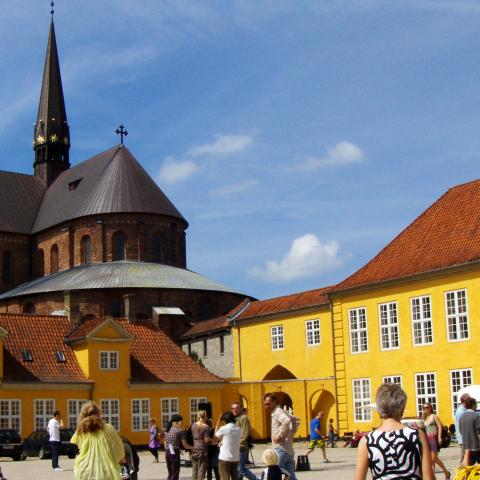
History and buildings
The idea of establishing a museum for contemporary art in Roskilde arose in the mid 1980s among a group of citizens wanting to create a platform for the experimental art of the time. The interest in experimental art in Roskilde stemmed from the departed gallery St. Agnes that during the 1980s, had shown Danish experimental art in particular. Its activities culminated with the Fluxus-related Festival of Fantastics that drew a line-up of prominent international artists to Roskilde. (www.festivaloffantastics.com)
The establishment of the Museum of Contemporary Art was supported by Roskilde municipality, enabling it to open in 1991. A few years later, in 1994, the State approved the museum and thus made it a national art museum under the Museum Law with special responsibility for contemporary art’s latest media.
About the buildings – the Royal Palace
The Royal Palace was built in 1733 by architect and master builder to the court, Lauritz de Thurah on commission by the autocratic King Christian VI. The palace is a four-winged Baroque building used as lodgings for the royal retinue when passing through or attending ceremonies at Roskilde Cathedral. Democracy movements increased around Europe at the beginning of the 1800s and in 1834, King Frederik VI set up the assembly of the estates of the realm. In the years preceding the adoption of the constitution in 1849, the Palace served as meeting place for the assembly of the estates of the realm. After this, the Estate hall was turned into an apartment where several prominent persons have lived, among them Holger Drachmann. Since 1925, the palace has served as the bishop’s residence and houses the diocese’s administrative offices. In 1991, the Museum of Contemporary Art moved into the main building with exhibition spaces on the ground and first floors.